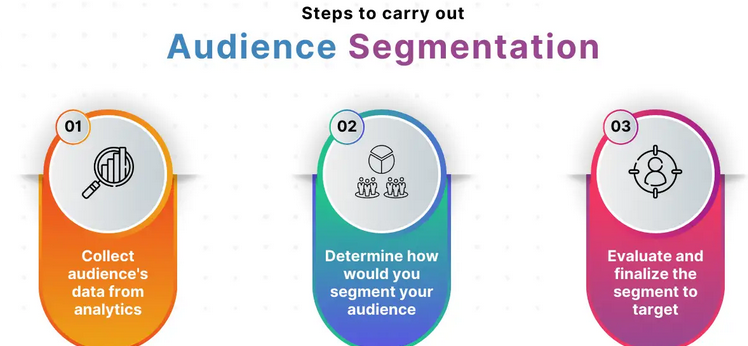In today’s digital age, effective marketing hinges on understanding your audience. One powerful tool that has revolutionized the marketing landscape is data. By harnessing the vast amounts of data available, businesses can create more precise and personalized marketing campaigns through audience segmentation. In this article, we will explore how to effectively use data for audience segmentation, providing actionable insights for businesses looking to boost their marketing strategies.

The Power of Data in Audience Segmentation
Data is the lifeblood of audience segmentation. It allows businesses to divide their customer base into distinct groups based on various characteristics and behaviors. These characteristics can include demographics, psychographics, purchase history, online behavior, and more. Here’s how to leverage data effectively:
Collect Comprehensive Data
To begin, you must collect a wide range of data points about your audience. This data can come from various sources, including website analytics, social media insights, customer surveys, and CRM systems. The more comprehensive your data collection, the more accurate your segmentation will be.
Define Clear Segmentation Goals
Before diving into data analysis, define your segmentation goals. What are you trying to achieve with this segmentation? Are you looking to increase conversion rates, improve customer retention, or expand your customer base? Clear goals will guide your statistics analysis.
Analyze Data for Patterns
Once you have collected ample data, it’s time to analyze it for patterns. Look for commonalities and differences among your audience. Are there specific age groups that engage with your brand more frequently? Do certain regions show a preference for particular products or services?
Utilize Advanced Analytics Tools
Consider using advanced analytics tools to process and analyze your data effectively. Machine learning algorithms and predictive analytics can reveal hidden insights that may not be immediately apparent through manual analysis.
Types of Audience Segmentation
Audience segmentation can take many forms, depending on the nature of your business and your goals. Here are some common types:
Demographic Segmentation
This divides the audience based on demographics like age, gender, income, and education. It’s useful for products or services that cater to specific age groups or income levels.
Psychographic Segmentation
Psychographics focus on personality traits, values, interests, and lifestyles. This helps you understand your audience’s motivations and tailor your messaging accordingly.
Behavioral Segmentation
Behavioral segmentation looks at customer actions, such as purchase history, website visits, and engagement with marketing materials. It’s useful for predicting future behavior.
Geographic Segmentation
This divides the audience based on location, which can be as broad as countries or as specific as zip codes. It’s essential for businesses with location-based services or products.
Benefits of Effective Data-Driven Segmentation
Implementing effective statistics-driven audience segmentation offers numerous benefits:
Personalized Marketing
By understanding your audience’s preferences and behaviors, you can create highly personalized marketing campaigns. This leads to increased engagement and conversion rates.
Efficient Resource Allocation
Segmentation allows you to allocate your marketing resources more efficiently. Instead of casting a broad net, you can focus your efforts on the segments most likely to respond positively.
Improved Customer Retention
Personalized communication and offers enhance customer satisfaction and loyalty. Segmentation enables you to identify and address the specific needs of different customer groups, reducing churn.
To determine the success of your segmentation efforts, monitor key performance indicators (KPIs) such as conversion rates, click-through rates, and customer retention. Compare these metrics for different segments to assess which groups respond best to your marketing strategies.
Conclusion
In conclusion, statistics-driven audience segmentation is a powerful tool that can elevate your marketing efforts to new heights. By collecting comprehensive data, setting clear goals, and utilizing advanced analytics tools, businesses can create highly targeted and personalized marketing campaigns. The benefits include improved customer retention, efficient resource allocation, and enhanced product development. However, it’s essential to address ethical considerations and stay attuned to future trends in this rapidly evolving field. With the right approach, data-driven audience segmentation can drive your business’s success in the modern digital landscape.
